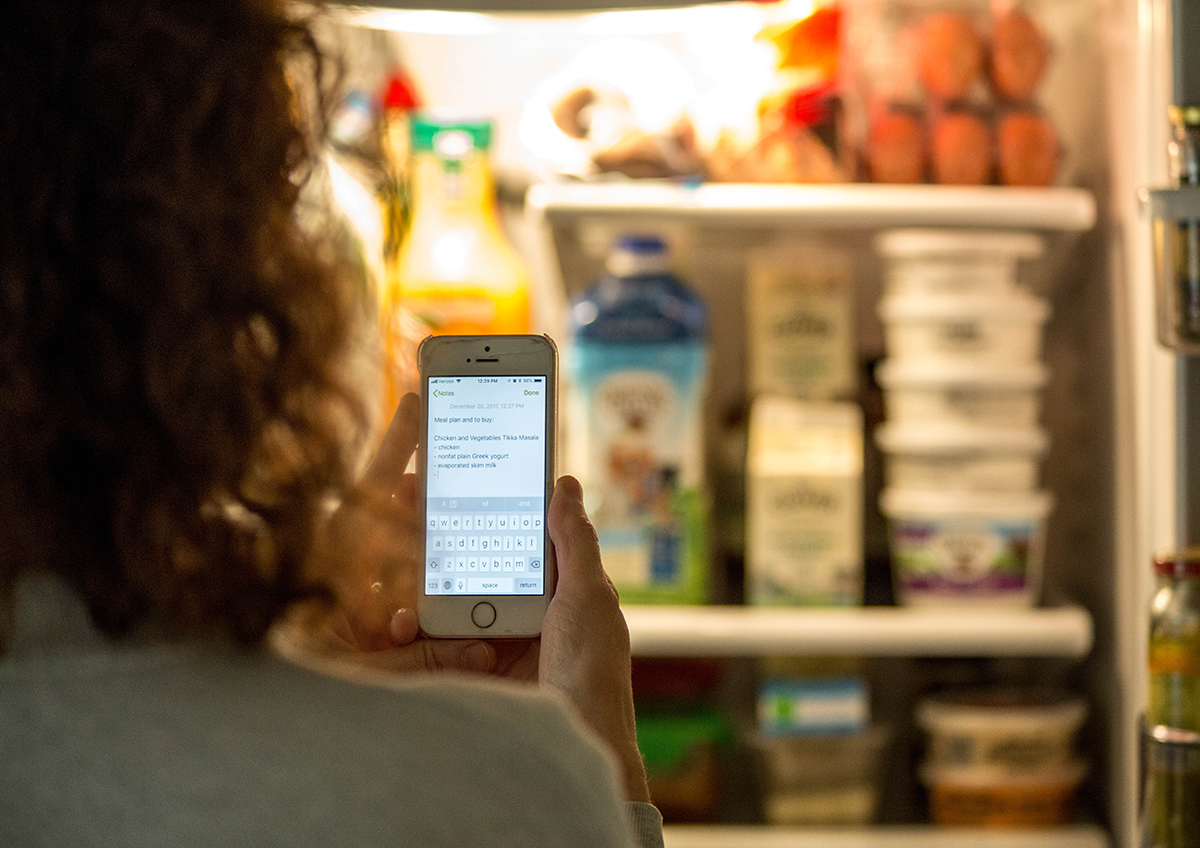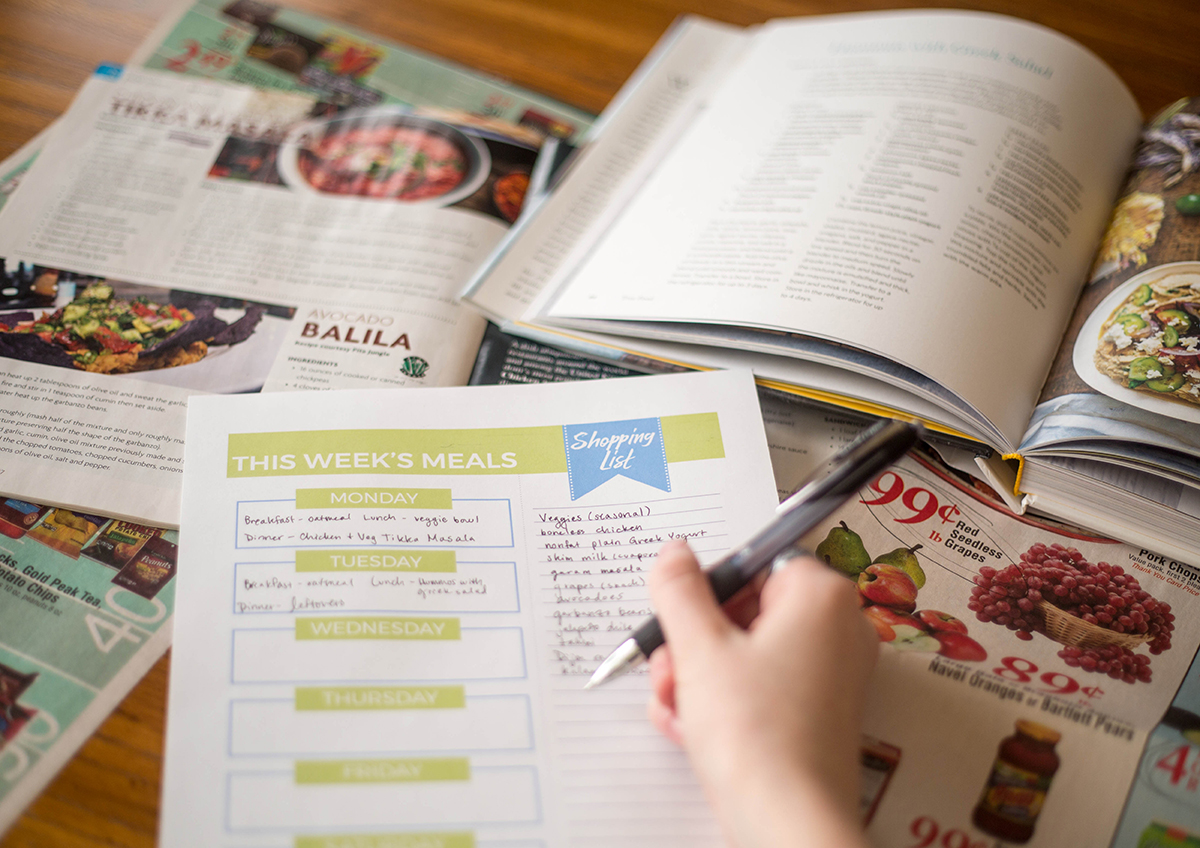
 By Bonnie Roill
By Bonnie Roill
This may sound familiar when you don’t plan your meals:
- You come through the door after a long day and realize you don’t have any food available to make a meal.
- You forgot to take something out of the freezer to defrost for today’s meal.
- That lovely broccoli you bought a week ago is now shriveled up in the back of the vegetable crisper.
You may think that meal planning is one of those things done by only super-organized people; however, it is as simple as using a pen and paper.
Maybe you’re thinking, “This nutritionist is crazy. I’m so busy; I don’t have the time to add one more thing to my day.” That is precisely why you need to plan your meals. Long-term, meal planning will ultimately save you time and money, plus lead to selecting healthier foods.
Behavioral researcher Brian Wansink, Ph. D., suggests we make over 200 food-type decisions daily, from cream in our coffee to the salad we order for lunch. Add this to the multitude of other daily decisions we make, and it’s easy to experience decision fatigue.
Decision fatigue, along with reduced willpower later in the day, results in less-than-stellar food decisions after 5:00 p.m. Imagine what it would be like to walk into your home knowing exactly what you’ll be preparing and eating tonight.
Meal Planning and Body Weight
It is no secret that when people get busy, they often put eating on the bottom of the list. When their hormones have finally had enough and send the message, “Feed me now,” they rush when making food choices. This lack of regular meal times, speed-eating, and overriding the body’s hunger signals sets us up for a broken metabolism, confused hormones, and selecting foods high in sugar, unhealthier fats, and too many calories.
Meal Planning Puts Food on Your Schedule
According to one study from Instantly, more than 53 percent of Americans skip breakfast at least once a week, and according to an OfficeTeam survey, about 29 percent just keep working through lunch.
Lunch has its own set of challenges: environment, time, food choices, storage and preparation at the workplace. Engaging in “desktop dining” – eating in front of a computer or an over-reliance on microwavable meals — quickly leads to food fatigue and becomes tedious. The cost of purchasing lunch can cause serious damage to the wallet and often results in gravitating toward less healthy fast-food choices.
Prepping for lunch meals takes thought and commitment, yet the benefits of looking forward to your lunch meal are one form of self-love.
5 Basic and Easy Steps to Meal Planning
- Create your goal.
For many, planning meals helps to save time, money, and ease up on food decisions. However, a secondary goal is to place the focus on the food. If your goal is to move into a healthier eating profile, planning your meals is the cornerstone of this change. For those on a special diet, meal planning provides the blueprint for compliance.
- Establish your food budget.
The food budget is one room of our spending house that we have more control over than we think. We often only look at how much we spend on food, but what about how much we lose in food waste as a result of poor planning.
Could you use an extra $700 a year? That is the estimated annual food waste of a typical American household.
In his book “American Wasteland,” activist and author Jonathan Bloom estimated that the United States could fill a college stadium with the amount of food it wastes … every day. According to a 2014 EPA study, the annual food waste in America is 38 million tons.
Browse the online or mailed weekly specials fliers to coordinate meal planning. There’s nothing as sweet as saving money on your favorite foods. Keeping a dollar figure in mind for weekly spending helps to avoid the urge to splurge on hyper-marketed foods.
Do not assume buying in bulk is always the most cost-efficient way to shop. The more food we purchase, the more we waste. A survey by researchers from The Ohio State University found that 53 percent of respondents reported more food waste when they bought in bulk.
- What’s in your cupboard?
Before you think about what you’re going to eat, take a weekly inventory of your fridge, freezer and cupboards. Taking stock of what is on-hand helps to create a shopping list that captures your actual needs and reduces impulse purchases. Be creative and learn to embrace leftovers. You’ll reduce waste, and it’s budget-friendly.
- Create your meal plan.
You get to choose – you can create a meal plan for the typical three meals, three meals plus one or two snacks, or start with your most challenging meal like lunch or dinner. Begin with small steps; planning one primary meal each day for five days out of the week is a good start. Select a day of the week to carve out 15 minutes and write down your plan.

Look for free printable grocery lists and menu planner templates you can edit on sites like freeprintablegrocerylist.com, vertex42.com or organizedhome.com.
To make meal planning time a habit, “anchor” it on to something you already do like having your Sunday morning coffee.
- Let’s go shopping …
Striving for a consistent day to food shop dovetails with your meal planning. If a weekend day is the only day available, don’t skip it. Once the busy week begins, you may end up not making that planned trip or making unplanned multiple trips throughout the week.
Home-delivery of groceries can be a backup plan and is just a click away! Just click on the foods you want and pick it up or have it delivered to your door.
If you have flexibility in your schedule, establishing set days to shop will help to solidify your meal plans. Use your flexibility to identify days/times when the store is less busy or has their shelves well stocked.
This is the first of a series of articles on meal planning and shopping. Watch for the next article in this series on meal planning:”The 5 Things You Need to Know about Meal Prepping!”
Bonnie Roill, a Registered Dietitian Nutritionist for over 35 years along with accreditation as a Hormone Support Coach, a certified Health & Wellness Coach and Personal Trainer, teaches women how to impact their health through their fork, feet and focus. Services include private sessions and customized meal plans, recipes and shopping lists for balancing hormones to whole food plant-based eating. Sign up at www.B3Nutrition.com to receive monthly recipes, cutting-edge nutrition news, and a free consultation. Contact Bonnie at (480) 242-9217.







